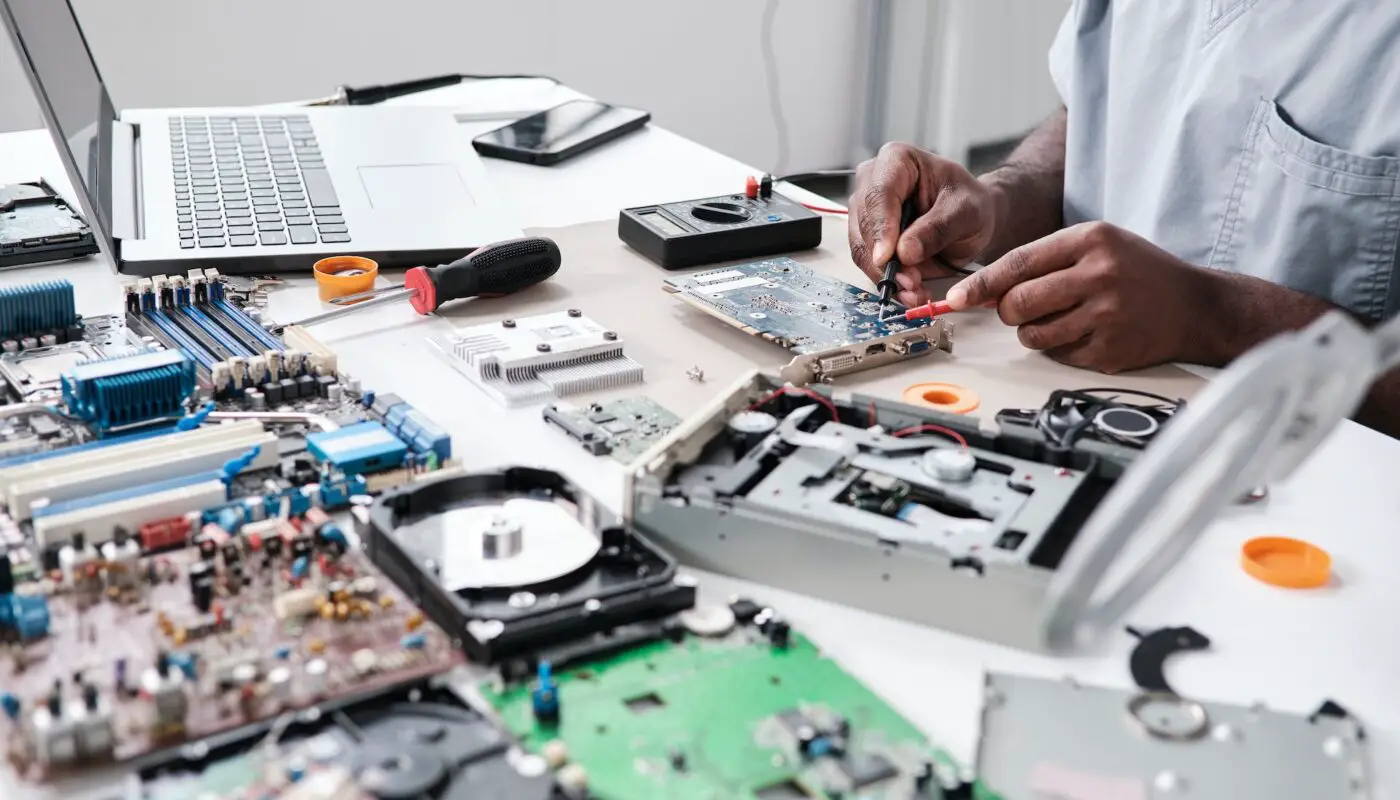In today’s tech-driven world, the rapid evolution of electronic devices has led to a culture of frequent upgrades, resulting in an alarming increase in electronic waste (e-waste). Disposing of devices like smartphones, tablets, laptops, and other gadgets poses significant environmental challenges due to their hazardous components and improper disposal methods. We will review limiting electronic device disposal and what impact that would have.
As responsible global citizens, it’s crucial to adopt practices that minimize e-waste and contribute to preserving the Earth’s well-being.
Table of Contents
Understanding the Impact of E-Waste
Electronic devices often contain toxic materials such as lead, mercury, cadmium, and other harmful substances. When improperly disposed of, these materials can leach into the soil and water, contaminating the environment and posing health risks to humans and wildlife. Furthermore, e-waste contributes to landfill overflow, polluting valuable space and releasing toxins as devices deteriorate.
The Role of Repair in Minimizing E-Waste
One effective strategy to limit e-waste is repairing and reusing electronic devices. Consider, for example, computer repair services available in areas like American Fork, Utah. Rather than disposing of a laptop or desktop computer when it starts to malfunction, residents can turn to these local repair services.
By fixing and maintaining our devices instead of replacing them, we significantly reduce the volume of e-waste. This practice helps preserve the environment, supports local businesses, and saves consumers money. It’s a win-win for everyone involved.
Embracing Sustainable Practices
Prolonging Device Lifespan
Extending the lifespan of electronic devices is one of the most effective ways to reduce e-waste. Proper maintenance, regular updates, and careful handling can significantly prolong the usefulness of devices. Opting for repair services or DIY fixes for minor issues instead of immediately replacing a device helps minimize unnecessary disposal.
Responsible Recycling and Donation
Responsible disposal is crucial when devices reach the end of their functional life. Recycling centers specializing in e-waste management can properly dismantle machines, extract valuable materials, and dispose of hazardous components in an environmentally friendly manner. Moreover, donating functional devices to charities, shelters, or organizations that refurbish electronics for reuse helps extend their lifespan and benefits communities in need.
Trade-in and Buyback Programs
Many electronics manufacturers and retailers offer trade-in or buyback programs, incentivizing customers to return old devices in exchange for discounts on new purchases. These initiatives encourage responsible disposal and often involve refurbishing or recycling devices for reuse, reducing e-waste and offering an economic incentive for customers.
Eco-friendly Device Choices
When purchasing new devices, consider eco-friendly alternatives. Look for products designed with recyclable materials, energy-efficient features, and longer life cycles. Additionally, support companies committed to sustainable manufacturing and responsible e-waste management practices.
Individual Actions for Collective Impact
As individuals, several actions can collectively contribute to minimizing e-waste:
- Educate and Advocate: Raise awareness among peers, friends, and family about the environmental impact of e-waste. Encourage responsible disposal practices and the importance of recycling electronic devices.
- Responsible Disposal: Locate certified e-waste recycling centers in your area and dispose of devices properly. Avoid dumping electronics in regular household trash or landfills.
- Battery Disposal: Batteries from devices are hazardous. Utilize dedicated battery recycling programs or drop-off locations to dispose of them safely.
- Reduce and Reuse: Prioritize reducing unnecessary purchases and consider reusing electronics for different purposes before discarding them.
Collaborative Efforts for a Sustainable Future
Preserving Earth’s environment requires collaborative efforts from governments, industries, consumers, and environmental organizations. Implementing stringent regulations on e-waste management, promoting eco-design principles in manufacturing, and investing in research for sustainable materials are crucial steps towards a greener future.
Final Thoughts About Limiting Electronic Device Disposal
Addressing the issue of e-waste demands a shift in consumer behavior and industry practices. By adopting responsible disposal habits, prolonging device lifespans, supporting recycling initiatives, and making informed purchasing decisions, individuals can contribute significantly to limiting e-waste and safeguarding the environment for future generations. Preserving Earth starts with our actions today, ensuring a sustainable and healthier planet for tomorrow.
